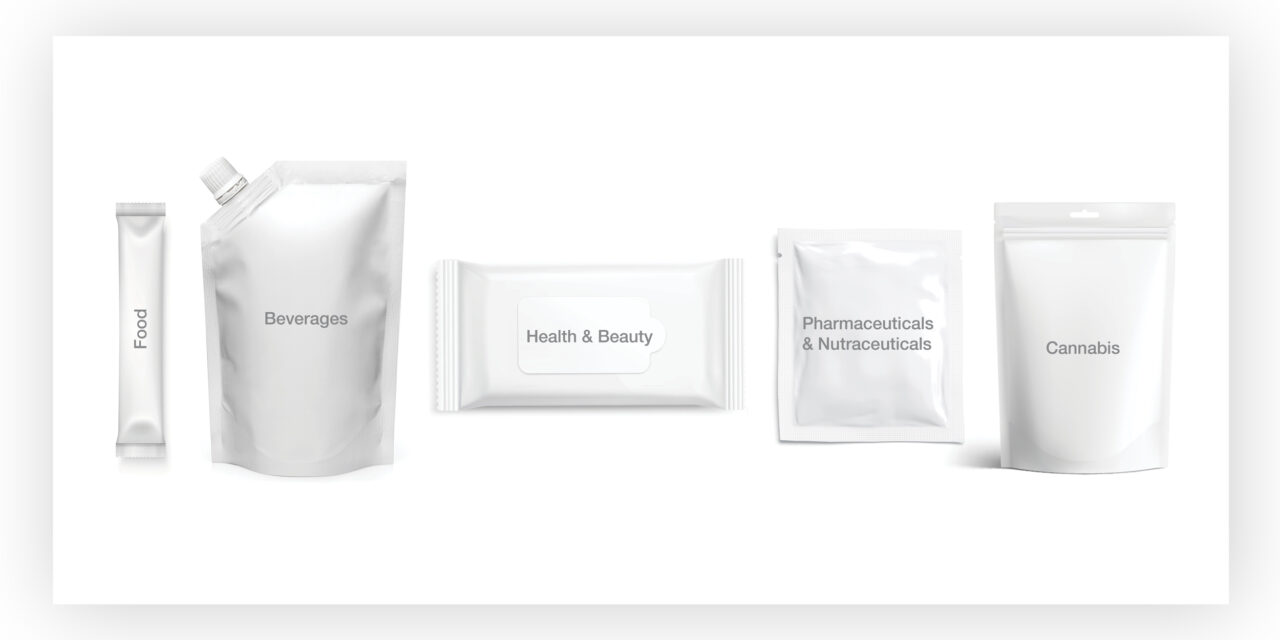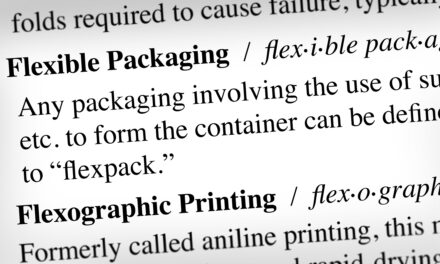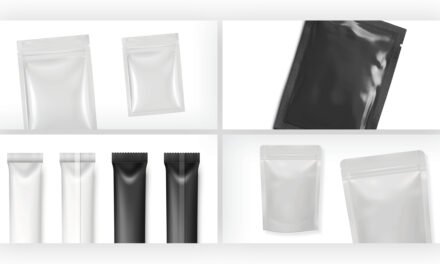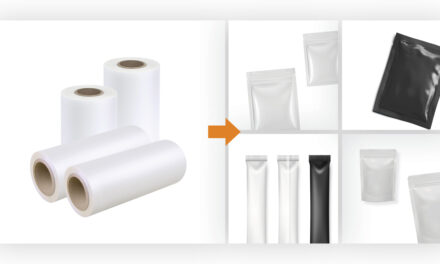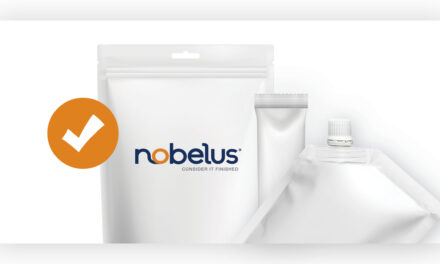EXPLORING NEW MARKETS IN FLEXIBLE PACKAGING
Whether you are new to the flexible packaging industry or a converter with several years of experience under your belt, branching out into new markets can be challenging. It can require seeking out and partnering with different brands, retraining your operating staff, and adjusting your workflow to optimize efficiency with the integration of new processes. While all these changes may seem obvious, there are several other factors converters need to consider when investing significant time and money into a new market segment. Keep reading to learn how to go about choosing a market to explore and how you can be prepared to meet challenges head on when you start the transition.
Knowing Your Rationale
Before any other decisions are made, and certainly before any funds are spent, it is crucial that key stakeholders and employees alike understand why resources are being diverted for this goal. After all, the reasons for such a change can be nearly endless. Is your operation being forced to pivot in the face of lowered demand in your current market? Does the new market promise sustainable growth in the long term? Has a current customer asked you to produce packaging for one of their other product lines?
Understanding the reasoning behind entering a new market can help motivate your staff to give their best effort during the integration process and expose some key points that will ultimately need to be addressed for any changes to be successful in the long run. It can also help set a timeline for when changes need to be made; a converter who is compelled to break into a new market by necessity will need to move more quickly than one who is deciding where to invest excess revenue to promote growth.
Popular Flexible Packaging Markets
No conversation about moving into a new market segment can be complete without giving a brief overview of some of the most popular markets and submarkets in the flexible packaging industry. We will look at five of the most popular categories.
- Foods
As a flexible packaging market, food covers a lot of ground. It can include anything from snacks and candy to produce bags and staple dry goods, such as rice and beans. Even changing from one segment in the food market to another may demand significant adjustments to the types of packaging an operation produces. Different product types will also have specific regulations and legal requirements that ensure each package is food safe.
- Beverages
While the beverage industry has traditionally focused on bottles and cans, today you can find specialty graphics on shrink-wrapped containers, liquid-filled pouches for on-the-go consumption, and a variety of powdered drink mixes. Although structural requirements in the beverage market can be quite challenging at times, they are typically straightforward and achievable for the average converter.
- Health & Beauty
Cosmetics, hygiene supplies, and personal care products are often purchased based solely on their packaging design. While the packaging’s structure still plays an important role in preserving the product and keeping powders and caustic materials contained, graphics and value-add features are key to making both brands and customers happy in this industry.
- Pharmaceuticals & Nutraceuticals
Both nutraceuticals and pharmaceuticals come in a variety of forms. Products in the pharmaceutical category, such as medications and contraceptives, will demand more familiarity with sterilization and security protocols. While nutraceutical products can come in as many iterations as pharmaceuticals, regulations tend to be far less strict, making them an excellent entry point for newer converters.
- Cannabis
The cannabis market is gaining momentum quickly as more and more states are beginning to legalize the substance. Cannabis overlaps with several other markets while still being a unique industry in terms of packaging due to age-restricted packaging requirements. It may take the form of cookies, gummies, drinks, lotions, powders, and more, with a variety of packaging types available for each iteration.
HOW TO SELECT A NEW MARKET SEGMENT
Now that we have an idea of just how much variation exists between different flexible packaging markets (and within each market), we will go over some factors converters should take into account when choosing which market segments their operation is best suited for.
Gauge Your Operational Strengths and Limitations
Successful business strategies always begin with an honest assessment of the company’s status, and flexible packaging conversion is no exception. Before you decide which new markets to explore, take some time to gather information about how your operation is performing in its current state. Where is your operation excelling? What are the most challenging jobs? How well trained and knowledgeable are your employees? Lean into your operation’s strengths and respect its limitations when deciding where to invest your resources. Some limitations might disqualify your operation from certain markets altogether.
While a wholistic assessment of your operation is crucial, three areas are of special importance:
- Equipment Capabilities
If your current equipment cannot meet the demands of a certain market, no amount of knowledge or networking will make the move successful. Digital presses are slower than traditional equipment and cannot be used to create retort packaging due to the temperature limitations of its ink. On the other hand, conventional presses have few structural limitations, but they are a poor fit for specialty markets that require quick turnaround times or multiple SKUs per order. Also consider which markets your shaping and filling equipment can cater to in regard to packaging type and speed. Ultimately, your mechanical capabilities will determine if you should pursue a different market strategy or invest in new equipment that is suitable for a specific segment.
- Experience Level
This point applies to company leadership, support staff, and operating staff who work on the production floor every day. Oftentimes, moving into a new market segment requires operators to handle a wider variety of material types in addition to different equipment and quality testing procedures. If your operating staff is mostly new to the flexible packaging industry, they may require further training before they can reliably take on new applications in live jobs. However, experienced staff may already be familiar with materials and processes used in a range of markets. Leadership and support staff will need to understand the needs of the new market well enough to proactively offer solutions and prevent potential issues. Assess your team’s confidence level in conjunction with their performance metrics to see which markets and applications are most feasible.
- Resource Availability
Even after overcoming any initial barriers to entry, your production line will need to consistently operate at a higher level once it begins processing live orders from the new vertical. Confirm that you have enough manpower to handle the learning curve for the new market while keeping pace with current production volumes. If you purchase new equipment or hire additional operating and support staff, make sure you can cover these expenses as it may take a while for the new revenue stream to turn a profit.
Understand Structural Requirements
Once you are confident in your ability to handle the production demands of a specific market segment, it is vital to gain a comprehensive understanding of the various structures and packaging types you plan to offer brands. Depending on the space you currently occupy, your existing workflow may change very little. In many market subsets, such as salty foods and candy wrappers, packaging structures are so standardized that the converter needs to learn only one or two types of structures to play in the market. In these instances, a converter’s speed to market, production capacity, and value-add offerings will make them appealing to brands.
However, in other markets – such as dehydrated foods, baby food, pharmaceuticals, and some nutraceutical applications – gaining a proper understanding of why brands or regulatory bodies require certain structures is crucial to your business’s success. In these spaces, there is little to no room for error as a defect in a package can harm the consumer, damage the brand’s reputation, and potentially lead to legal issues. Brands want to know that their packaging is produced by a converter who understands their industry inside and out and can explain the rationale behind each step in the conversion process.
Converters should know which materials their team is most comfortable working with and ensure each person on the production floor has a strong grasp on why each layer in a flexpack structure is present. Consider also that some markets make greater use of fitments (such as zippers, spouts, and valves) than others, and these components require more precision and skill than standard packaging in addition to unique equipment. In many market segments, a converter’s ability to articulate why their packaging uses a specific combination of materials, thicknesses, equipment, fitments, adhesives, and other components will be the deciding factor in whether or not they get deals with reputable brands.
Develop a Supply Chain Strategy
A single adjustment or addition to your existing supply chain can have a sizeable ripple effect through every other part of your operation. Print converters who purchase pre-lams will need to verify that their vendors can provide structures that meet the criteria of the new market; if not, they will need to partner with new vendors, who may have different pricing and lead times. Converters who create their structures in-house may have to source new types of films and calculate how much of these new materials will need to be kept in inventory to prevent delays in production. Finding reliable vendors can be a time-consuming process, so these issues should be addressed early in the transition to a new market. Without exception, perform trial runs and quality tests on every new material that enters your facility.
If the demands of the new market are significantly different than the markets you currently serve (i.e., transitioning from coffee bean bags to wrappers for organic confections), the product’s shelf life may have a larger effect on lead times, storage requirements, quality control, and other operational aspects. Additionally, different applications may require unique testing procedures and equipment to ensure the packaged product remains protected and fresh until it reaches the end consumer. Evaluate every link in your supply chain and consider how even a small change in your processes could affect the rest of your business model.
Set Realistic Expectations
Finally, realize that an undertaking as big as entering a new market frequently involves delays and setbacks and that sustainable change can be a slow process. While everything may go smoothly from start to finish, overestimating your ability to take on such a huge project can result in lost revenue, frustrated employees, and damage to your current workflow. Long before any concrete actions are taken, work with key players on your team to devise a detailed strategy for each step in the transition.
Give yourself time to gather as much data as you can, train and retrain your staff, and make all the necessary purchases and adjustments to your workflow. Estimate how long this process should take and then add several weeks or months to provide a buffer for troubleshooting and problem solving. Walk through the prospective workflow step by step and locate potential stress points, addressing each issue in detail with a thoughtful, long-term solution.
By creating a robust and forgiving timeline, you can provide yourself and your team with room to make mistakes and learn from them before live jobs are at risk. Lay down the foundations of success with diligence and tact so you can reap the rewards of your hard work once you are firmly established in the new market segment.
INTERESTED IN LEARNING MORE?
Reach out to us by phone or email if you want to learn more about the different flexible packaging markets and what it takes to adjust your operation. Our in-house solutions experts have years of experience in the flexible packaging industry and are always ready to provide consultation as you decide on next steps. Find out how you can elevate the appeal of your packaging with Nobelus specialty films, which come in a variety of finishes with unique visual and haptic effects. We want to partner with you as your operation changes and grows to help ensure your long-term success.

